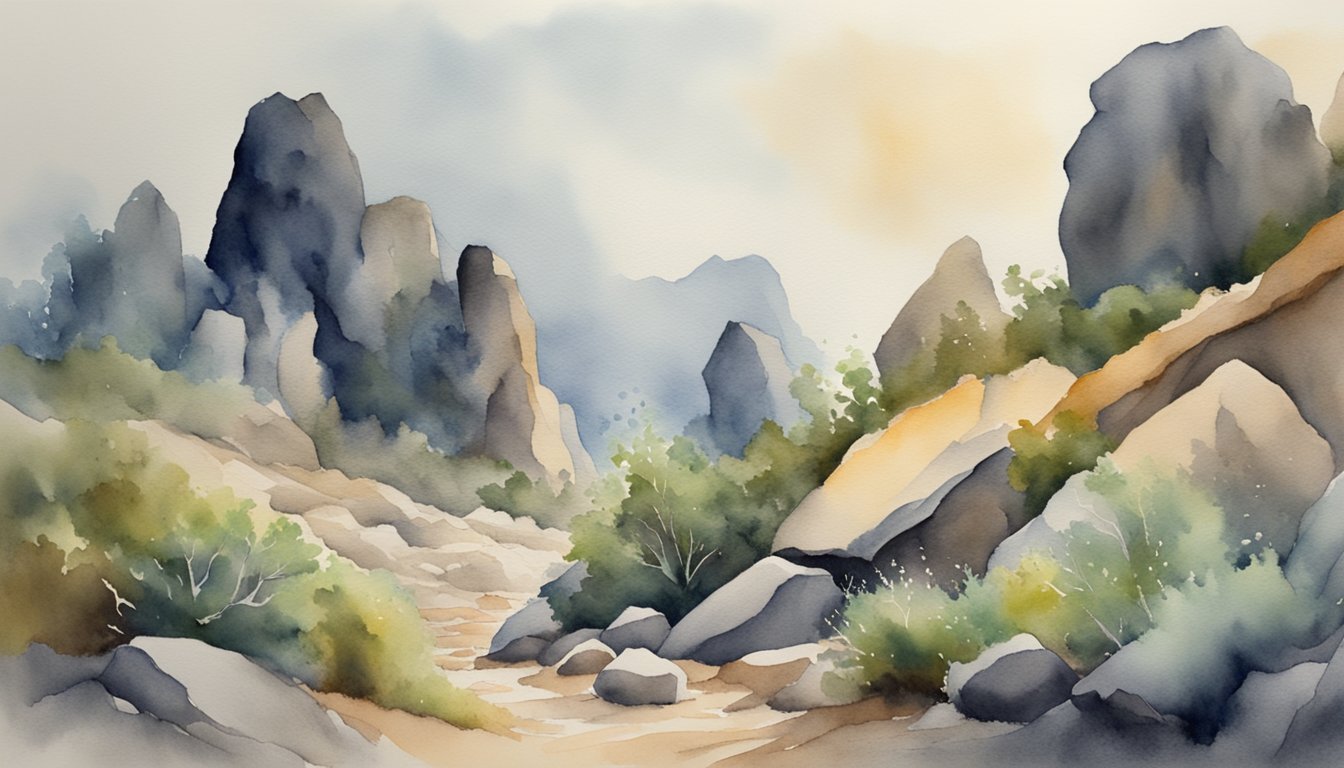Types of Weathering
Weathering describes the complex processes that cause the breakdown of rocks into soil and sediments. Each type of weathering alters the earth’s geology through different mechanisms and has a unique impact on landscape formation.
Physical Weathering
Physical weathering, also known as mechanical weathering, involves the breakdown of rocks without chemical changes. This can occur due to temperature changes such as frost weathering where water freezes and thaws in the cracks of rocks, leading to thermal stress and eventually rock fragmentation. Other processes include salt weathering, often observed in arid regions where the growth of salt crystals exerts pressure on rock, and unloading or pressure release, where rocks deep within the Earth expand and fracture as they move closer to the surface, benefiting from reduced pressure.
For an in-depth exploration of mechanical weathering, learn more from National Geographic Society.
Chemical Weathering
Chemical weathering occurs when rocks undergo chemical reactions that alter their composition. This can happen through hydration, where minerals absorb water and expand, or hydrolysis, the reaction of silicate minerals with water, leading to soil formation. Carbonation is another significant process involving carbon dioxide-laden rainwater reacting with rocks like limestone, causing them to dissolve. Oxidation, the combination of minerals with oxygen, results in rust and is particularly noticeable in iron-rich rocks. Acid rain, a diluted solution of acids in water, accelerates the chemical disintegration of rocks.
Discover more on the process of chemical weathering at Science Notes and Projects.
Biological Weathering
Biological weathering includes any weathering that’s caused by living organisms. Animals and plants can physically break apart rocks, an illustration of which could be roots growing into rock joints. On the chemical front, organisms can produce acids, either directly or indirectly, which contribute to the weathering process. Lichens on rocks, for example, secrete organic acids that chemically alter the rock surface.
Read about the effects of living organisms on weathering from Internet Geography.
Effects and Factors of Weathering

The natural processes of weathering alter the Earth’s surface over time through a variety of agents and contribute to soil formation, shaping the landscapes and ecosystems.
Weathering Agents and Processes
Weathering occurs through several mechanisms, both physical and chemical, that break down rocks and minerals. Physical, or mechanical, weathering includes processes like the freeze-thaw cycle, where water seeps into cracks in the rock, freezes, and expands, leading to the disintegration of rock. Chemical weathering involves the reaction between minerals and substances such as carbonic acid in rainwater, altering the chemical composition of the rock and weakening its structure. Biological weathering, involving living organisms like lichen and mosses, and trees whose roots can expand cracks, further contributes to these processes.
Contribution to Soil Formation
The particles resulting from weathering contribute significantly to the formation of soil. Minerals break down into smaller particles, and organic matter from plants and animals mix in, creating a medium capable of supporting more vegetation. Over time, layers of soil develop that are essential for terrestrial ecosystems, agriculture, and the Earth’s nutrient cycles.
Influence on Landscapes and Ecosystems
Weathering and the subsequent erosion by agents such as wind, water, and ice sculpt the planet’s surface, creating diverse landscapes from deserts to karst formations with sinkholes and caves. These processes also expose new rock surfaces to weathering, forming new soil and habitats that support life. The interaction of climate, rock type, and vegetation determines the specific effects on any given landscape.

